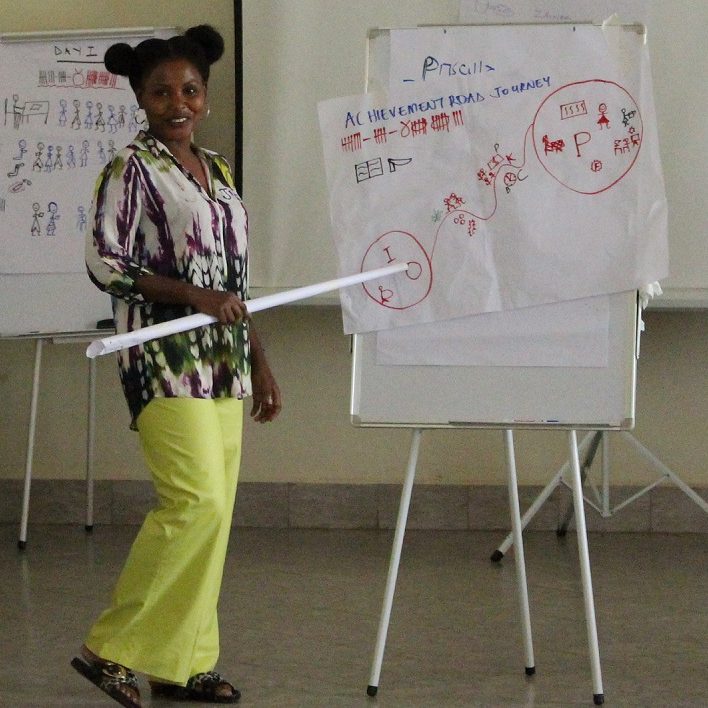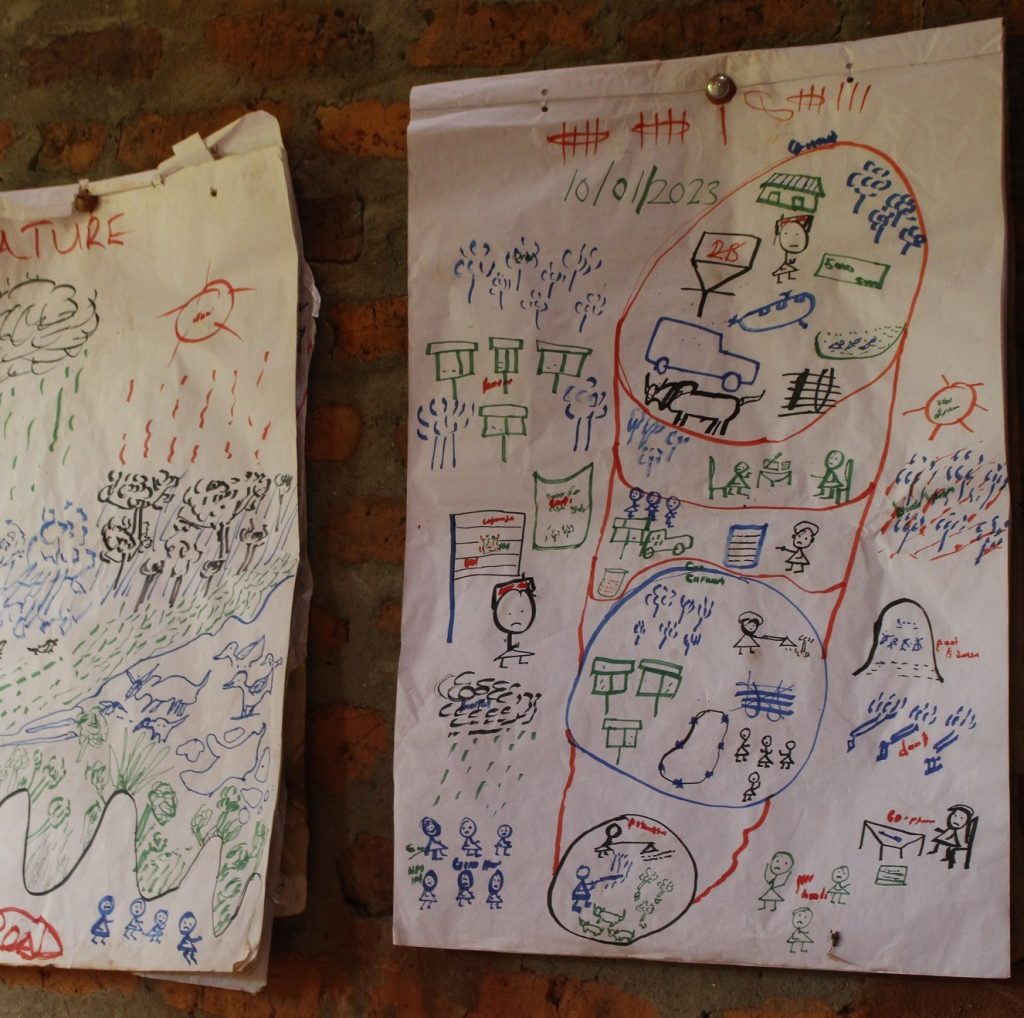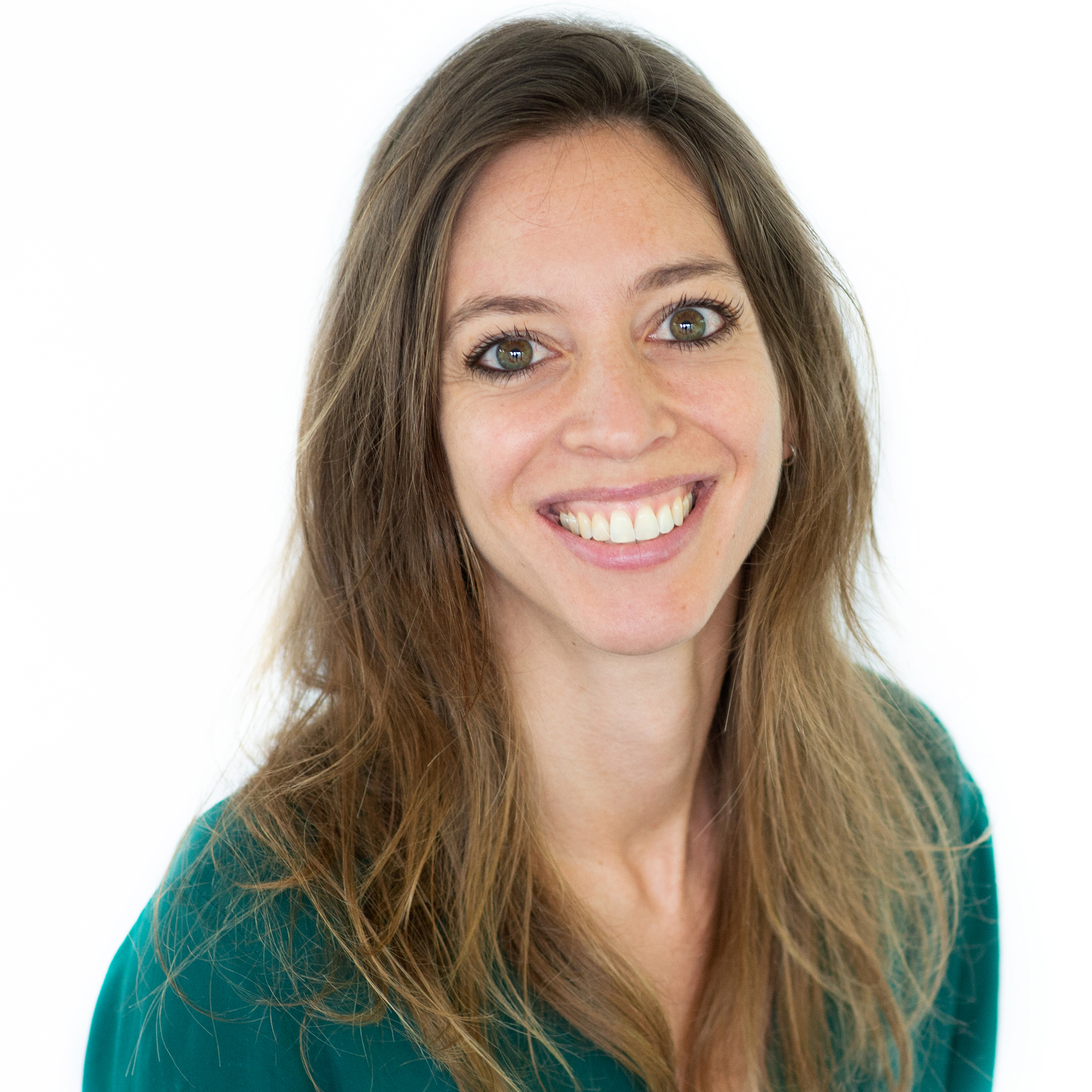This is what the economy of the Amazon…
10 July, 2024
Thursday 07 march 2024
Photos on this page: © Fanny Verkuijlen / IUCN NL
In Uganda, 46% of the local government positions and 43% of the cabinet positions are filled by women[1]UNEP. (2023). Gender Equality Strategy 2022-2025. Link to source.. Yet, the African country ranks 78 on the Global Gender Gap Index 2023, out of 146 countries listed[2]World Economic Forum. (2023). Global Gender Gap Report 2023. Link to source.. The gender gap seems relatively small in political context, but is large in rural parts of the country. A study by FAO (2024) on the status of women in food systems in five sub-Saharan countries, including Uganda, measuring an average gap agricultural labour productivity gap of 35 percent in favour of men[3]FAO. (2024). Gender gap in agricultural labour productivity: A cross-country comparison. Link to source..
In rural parts of the country, small-scale women farmers do not always face the same production conditions as men farmers[4]UN Women. (2018). Factors driving the gender gap in agricultural productivity: Uganda. Link to source.. According to Peace Chandini, Lead GALS trainer at ECOTRUST in Hoima, ‘GALS contributes to transforming gender norms and reduces gender-based violence, identified as a key risk when increasing the volume of cash, equity or opportunities available to a household.’
Peace Chandini, Lead GALS trainer at ECOTRUST in Hoima‘GALS contributes to transforming gender norms and reduces gender-based violence, identified as a key risk when increasing the volume of cash, equity or opportunities available to a household.’
In the MoMo4C landscape in Uganda, conflict and disagreement between men and women in land management is a potential threat to restoring nature and developing sustainable livelihoods. These struggles concern access to land, managing resources and payments.
Through the Mobilising More for Climate (MoMo4C) programme, IUCN NL works with the Environmental Conservation Trust of Uganda (ECOTRUST) in developing local initiatives into investable business enterprises. ECOTRUST supports rural communities on sustainable environmental management to conserve biodiversity and enhance social well-being.
To ensure that restorative activities and payments under their programmes do not unintentionally increase gender-based violence, which can be an unintended and “invisible” result if the risks and realities of gender-based violence are not eliminated, ECOTRUST decided to implement the Gender Action Learning Systems Framework (GALS).
The overall aim of the GALS methodology is avoiding violence towards vulnerable community members in financial situations, to prevent misuse of emerging resources and to ensure inclusion of marginalised communities into business case development. GALS is a community-led household methodology that uses participatory processes and visual diagrams to empower women and men to take action against societal norms that drive gender inequality and plan for their futures together. It focused on creating self-led economic, social and political transformation at an individual, household, community and organisational level. GALS was developed by dr. Linda Mayoux as part of a programme of Oxfam Novib and partner organisations[5]Oxfam Novib. (2014). Gender Action Learning System. Link to source..
ECOTRUST has since successfully started integrating GALS in its activities under MoMo4C, of which some important changes within gender dynamics in the communities and at household level have taken place.
The GALS methodology positions women and men as drivers of their own development rather than victims. It applies a holistic approach, making it an effective tool to increase gender equity in terms of power, access and control of resources. GALS is a mainstreaming methodology for women and men to address gender issues important to the effectiveness of any development intervention.
The GALS methodology is developed to:
GALS provides practical tools for gender transformation in the community, including:
Over the past years, ECOTRUST has organised multiple GALS meetings with communities in the landscape. Gender analysis conducted during these meetings confirmed power inequalities between men and women. It also became visible that differences in access to land use is related to power relations in households and communities.
In some communities, for example, women have no opportunities to own land. Because of this, they cannot participate in conservation activities contributing to a sustainable livelihood. This does not mean that they have no role in these activities: women, being part of a farming family, often work on the land or process the products, take care of children and maintain households. Despite having this multi-layered role in their families and communities, the work of women is often not recognised and they have less or no access to the resources available.



To address gender inequality at the source, working on household and community level also improves women’s access to land and its resources. ECOTRUST worked with couples on improving their financial planning and administration through exercises including both women and men. Couples worked on a ‘vision road journey’ together, encouraging the participants to visualise both visions for their households both individually and jointly, in a particular time frame. Subsequently, they evaluate their current and past situation, and identify opportunities for their future goals – and the steps to take to achieve them.
These activities have stimulated significant changes. Whereas, according to Pauline Nantongo, Executive Director of ECOTRUST ‘cultural tradition only allows women to fulfil maternal and household roles, women are now actively participating in planning the family budget and making financial decisions.’
One of the coordinators of a farmer’s cooperation, Fred Wamono, said the training sessions of ECOTRUST made a real difference in his family: his wife and he now have joint meetings about their finances, they have joint a savings group together and they have purchased land and four cows together. Another participant, Apollo Kugonza shared that ‘the development I experienced in my home ever since being introduced to GALS has been enormous, which can be attributed to the fact that women are more risk averse than men and take financial decisions into careful consideration,’ he said.
GALS training participant IreenThe gender balance tree has helped me maintain order in my home, now I can tell my sons to do the dishes.
A major challenge in these farming communities is spending a large part of the family income on alcohol. According to Prossy Kisembo, Coordinator Murchison Landscape at ECOTRUST, ‘men feel like they should spend their money and time on “leisure” activities and the women can do the rest – since their contribution to the home is the money they provide,’ which creates power imbalances. For the NGO, it has been challenging to attract a substantial number of men to the training sessions, while joint participation is essential to the GALS approach. At the same time, when men were present at the meetings, some women may have been less open because they felt oppressed by their partner.
One of the goals is that by empowering women, both men and women view the roles of their partners differently. In some families, the training sessions have greatly improved gender relations, potentially also leading to decreasing gender-based violence. To address conflicts, ECOTRUST used a GALS tool called the ‘challenge action tree’ that delves deeper into understanding the challenges being faced in households and identifying the root causes of conflicts, while pointing out potential solutions for these problems. For participant Ireen this tool initiated a significant change: ‘the gender balance tree has helped me maintain order in my home, now I can tell my sons to do the dishes.’
The introduction of GALS has resulted in improving to the opportunities of both women and the men in the participating families and in their communities. ‘Women are now more often perceived as knowledgeable and are consulted on matters concerning livelihoods and households,’ said Judith Nyiramugisha, Coordinator Mt, Elgon Landscape at ECOTRUST.
The road to gender equality, however, starts at a young age. For girls, an important step is going to school. Feeling safe in their homes, however, is also essential in obtaining life skills to adapt to societies they are part of. As is key to the GALS approach, both girls and boy must be encourage to work together on the resources available. As mentioned by participant Ireen, the GALS training sessions have led to more boys doing house girls, sharing this responsibility with girls and women.
Although there are still many steps to take towards an equal use of sustainable land use and ownership, the GALS training of ECOTRUST in farming communities has shown significant steps forward. ‘GALS enables us to show people that they can be agents of change, starting with both women and men visualising their future,’ concluded Pauline Nantongo.


| ↑1 | UNEP. (2023). Gender Equality Strategy 2022-2025. Link to source. |
|---|---|
| ↑2 | World Economic Forum. (2023). Global Gender Gap Report 2023. Link to source. |
| ↑3 | FAO. (2024). Gender gap in agricultural labour productivity: A cross-country comparison. Link to source. |
| ↑4 | UN Women. (2018). Factors driving the gender gap in agricultural productivity: Uganda. Link to source. |
| ↑5 | Oxfam Novib. (2014). Gender Action Learning System. Link to source. |